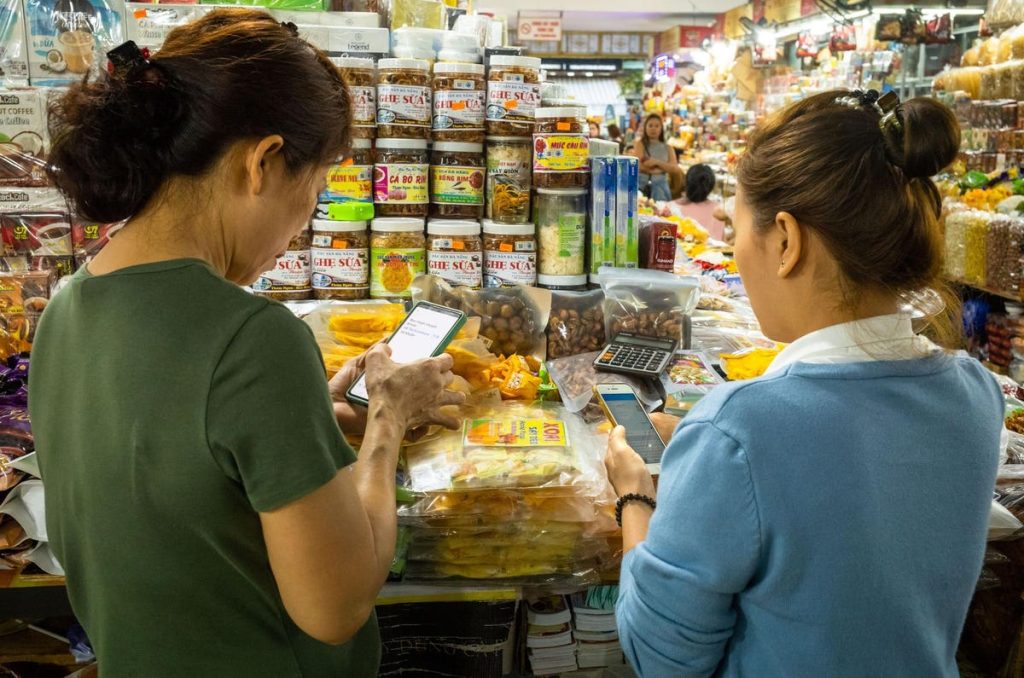In a rapidly digitizing world, many Asian countries are going cashless in order to create better, faster, and cheaper payment infrastructure. But should 100% cashless be the goal?
While cashless transactions offer clear benefits, significant barriers exist to achieving a completely cashless society. Infrastructure limitations, inadequate digital literacy, and disparities in access to technology hinder the widespread adoption of digital payments in many Asian countries. In addition, cultural preferences and the role of cash in informal economies are tough to dislodge.
Advantages
Cashless payments offer numerous advantages that have led to their growing popularity. Firstly, they provide enhanced security compared to cash transactions. With cash, there is always a risk of theft or loss, whereas digital payments can be protected with encryption and authentication measures. This reduces the chances of fraud and provides peace of mind for both consumers and businesses.
Further, cashless payments offer convenience and ease of use. With a simple tap or swipe, transactions can be completed quickly, eliminating the need to carry around bulky wallets or count out exact change.
Additionally, cashless transactions provide a digital record of all transactions, allowing for easy tracking and budgeting. This can be particularly beneficial for individuals and businesses looking to manage their finances more efficiently. The convenience of digital receipts and transaction history also simplifies the process of returns or refunds for merchants and consumers.
China is obviously the case-study for going cashless, where nearly 90% of all retail transactions have gone digital.
Disadvantages of Cashless Payments
Yet, despite these benefits, there are several important disadvantages to consider. One major concern is the issue of privacy. Cash transactions are anonymous, whereas digital payments leave a digital trail. This raises concerns about personal data security and the potential for data breaches. As more transactions occur digitally, individuals may become more vulnerable to identity theft or unauthorized access to their financial information. The informal economy is often resistant to digital as well as it may mean additional taxes or scrutiny of traditionally all-cash businesses.
Another disadvantage is the reliance on technology. Cashless payments require access to smartphones, card readers, or other digital payment devices. In regions with limited access to technology, such as rural areas or underdeveloped countries, going cashless can exclude a significant portion of the population.
Furthermore, cashless transactions are dependent on a stable and reliable internet connection. In areas with poor connectivity or frequent power outages, relying solely on digital payments can be highly problematic. This is evident in a country like the Solomon Islands where the majority of power generation is through relatively unreliable diesel generators. There, cash is certainly still king, is universally accepted, and does not rely on external factors for its usability.
Practical Limitations of Going 100% Cashless
While the benefits of cashless payments are enticing, achieving a completely cashless society has several practical limitations. One significant barrier is the lack of adequate infrastructure to support digital transactions. In many Asian countries, particularly those with less developed financial systems, the necessary infrastructure for seamless digital payments is still in its infancy. The availability of card readers, point-of-sale (POS) systems, and online payment gateways is crucial for the widespread adoption of cashless transactions.
Another practical limitation is the issue of digital literacy. While the younger generation may be more comfortable with digital technology, there are still significant portions of the population, particularly the elderly, who are not as proficient in using digital devices or understanding digital payment systems. This lack of digital literacy can hinder the adoption of cashless payments, as individuals may be reluctant to embrace technologies they do not fully understand.
In addition to infrastructure and digital literacy, the cultural preferences, habits, and the role of cash in informal economies cannot be overlooked. In many Asian countries, cash is deeply ingrained in cultural practices, such as gift-giving or traditional ceremonies. The use of cash in informal markets and street vendors in many Asian countries is also the norm. These cultural and economic factors create resistance to the complete elimination of cash from society.
Banking the underbanked
One of the primary goals of the cashless movement is to promote financial inclusion. However, the transition to a cashless society may ironically further exclude the unbanked and underbanked population.
The unbanked and underbanked population often face barriers such as a lack of identification documents, limited financial literacy, or low income levels, which prevent them from accessing banking services. For these individuals, cash serves as the main medium of exchange, allowing them to participate in economic activities and meet their daily needs.
Without the option to use cash, the unbanked and underbanked population may find themselves unable to engage in transactions, both formal and informal. This exclusion can deepen existing inequalities and hinder efforts to promote financial inclusion.
Looking forward
While the practical limitations and challenges surrounding cashless payments are evident, it is undeniable that the future holds significant potential for further digitization of financial transactions. As technology continues to advance and become more accessible, the barriers to adopting cashless payments are likely to diminish.
However, it is crucial to approach the future of cashless payments with caution and a focus on inclusivity. Striking a balance between cash and cashless payments is essential to ensure that individuals from all walks of life can participate in the economy. By considering the needs of the unbanked and underbanked population, addressing security concerns, and investing in infrastructure, societies can embrace the benefits of cashless transactions while safeguarding financial inclusion and accessibility.
Striking a Balance
While the idea of going 100% cashless may seem appealing, it is essential to acknowledge the practicality and limitations associated with this trend. Infrastructure limitations, inadequate digital literacy, cultural preferences, and the role of cash in informal economies pose significant barriers to achieving a completely cashless society.
By investing in infrastructure, improving digital literacy, and considering alternative payment methods, societies can pave the way for a more gradual and successful transition towards a predominantly cashless economy. Striking a balance between cash and cashless payments is essential to harness the benefits of digitization while ensuring financial inclusion for all.
As the cashless movement continues to evolve, it is crucial to foster a nuanced understanding of the complexities surrounding this trend. Only through careful consideration of practical limitations and a focus on inclusivity can we create a future where cash and cashless payments coexist harmoniously, empowering individuals and economies alike.
Read the full article here















